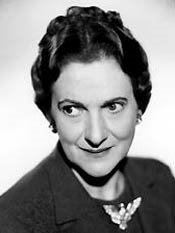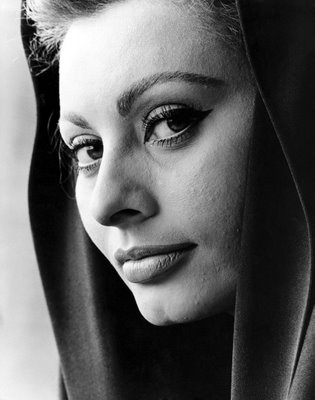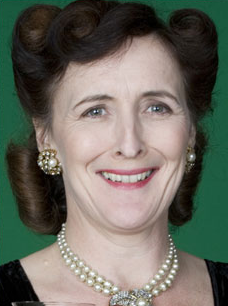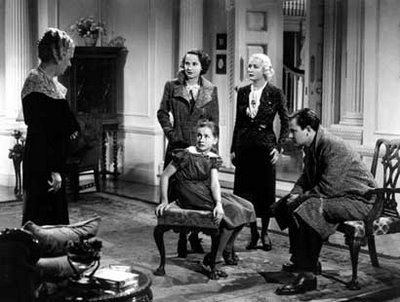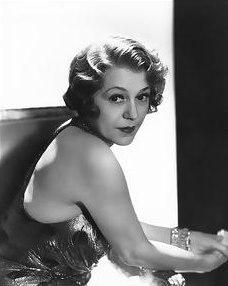
Ponders the myriad pathologies of pop culture.
Obsesses about actressing at the edges.
Loves grilled cheese.
ARCHIVE OF SUPPORTING ACTRESS SUNDAYS & THE SMACKDOWN
9.29.2006
9.26.2006
Shareeka Epps in Half Nelson - Supporting Actress Watch
Well.
The Stinkys just yesterday caught what will certainly be one of the most compelling performances of the year:


...Shareeka Epps in Half Nelson (2006).
Epps plays Drey, a successful enough eighth-grader who's already tired out by the world around her. At thirteen, Drey's nearly on her own: disregarded by an absentee father, left-behind by an incarcerated older brother, adored by a mother who cares deeply about Drey even as she's way too overworked and overtired to care for her. Drey goes to school (most of the time), plays on the basketball team, and falls asleep in front of the tv. And, then, one night when her father neglects to pick her up after a basketball game, Drey comes into possession of something that promises to change the way she looks at life, something that threatens to grow her up real fast: a secret. The secret is what you've likely already heard about the film (if you've heard anything) -- Drey's history teacher/basketball coach (Ryan Gosling) is a crackhead.  Drey discovers him based out in a stall in the girl's lockerroom and, once she knows, and once he knows she knows, Drey's world begins to change. And the relationship that develops between these extraordinary actors (Epps & Gosling) is heart-stomping in the brutality of its honesty.
Drey discovers him based out in a stall in the girl's lockerroom and, once she knows, and once he knows she knows, Drey's world begins to change. And the relationship that develops between these extraordinary actors (Epps & Gosling) is heart-stomping in the brutality of its honesty.
Epps is that rare actor who can just -- say -- narrow her eyes and very nearly stop your heart. (The writing team had Epps in mind for the role after casting her in their 2004 short film, "Gowanus, Brooklyn": [J]ust picturing her was really great. Knowing how much she could communicate without talking, I think, was helpful...") And, indeed, it's in her eyes, a gaze alternately weary and wary (and very occasionally joyfully wide) that Epps conveys the full depth of Drey's experience holding her teacher's secret. The film tracks Epps' Drey as she experiments with the power this gives her, with the ways she's newly important in her teacher's life. In a roundabout way, this emboldens her to cultivate a relationship with neighborhood bigshot, Frank (Brother to Brother's Anthony Mackie in a revelatory turn). Epps' Drey moves (literally) between these two men -- the drug dealer and the drug addict. Both men treasure Drey's potential; each man values Drey's respect. Drey proves an adept and intelligent student of what each man wants her to be, and this tutorial reveals to Drey just how limited her options -- as a barely noticed black girl in Brooklyn --actually are. (It's a chronological crossroads recently mined toward totally different ends in 2003's Thirteen, and -- to their credit -- Half Nelson's filmmakers appreciate the gravity of this difference.)
In a roundabout way, this emboldens her to cultivate a relationship with neighborhood bigshot, Frank (Brother to Brother's Anthony Mackie in a revelatory turn). Epps' Drey moves (literally) between these two men -- the drug dealer and the drug addict. Both men treasure Drey's potential; each man values Drey's respect. Drey proves an adept and intelligent student of what each man wants her to be, and this tutorial reveals to Drey just how limited her options -- as a barely noticed black girl in Brooklyn --actually are. (It's a chronological crossroads recently mined toward totally different ends in 2003's Thirteen, and -- to their credit -- Half Nelson's filmmakers appreciate the gravity of this difference.)
 Amazingly, Epps was 15-16 years old when the film was shot, nearly two years having passed between the making of the short and beginning production on the feature. Yet, Epps' performance retains the essential in-between-ness of Drey's age. Epps' Drey is -- by turns -- a hardened teen, an awkward adolescent, a wise woman. (And sometimes there and back again, all in a single take, as in Lulu's favorite scene in which Epps' Drey asks Gosling's character an honest question about the substance that crowds her life: "What's it feel like?" Her question is rebuked with an infantilizing non-reply, and Epps' expression transforms from inquisitive sincerity to weary disdain, open to guarded, in a profoundly true millisecond.) Alhough Epps' performance coordinates the film's heart, & while Epps routinely outshines the luminous Ryan Gosling (whose character's gravitational spiral provides the narrative structure of the film), Epps' role -- like Drey herself -- is a supporting one, a satellite in orbit of the larger bodies around her. Epps' Drey hovers at the edges even when she's at center. Watching Epps -- the actress -- maintain the clarity and maturity to allow Drey -- the character -- just begin figuring out who she is... Well, Shareeka Epps' performance stands as one of the more exciting actressing events in recent (& even not-so-recent) memory.
Amazingly, Epps was 15-16 years old when the film was shot, nearly two years having passed between the making of the short and beginning production on the feature. Yet, Epps' performance retains the essential in-between-ness of Drey's age. Epps' Drey is -- by turns -- a hardened teen, an awkward adolescent, a wise woman. (And sometimes there and back again, all in a single take, as in Lulu's favorite scene in which Epps' Drey asks Gosling's character an honest question about the substance that crowds her life: "What's it feel like?" Her question is rebuked with an infantilizing non-reply, and Epps' expression transforms from inquisitive sincerity to weary disdain, open to guarded, in a profoundly true millisecond.) Alhough Epps' performance coordinates the film's heart, & while Epps routinely outshines the luminous Ryan Gosling (whose character's gravitational spiral provides the narrative structure of the film), Epps' role -- like Drey herself -- is a supporting one, a satellite in orbit of the larger bodies around her. Epps' Drey hovers at the edges even when she's at center. Watching Epps -- the actress -- maintain the clarity and maturity to allow Drey -- the character -- just begin figuring out who she is... Well, Shareeka Epps' performance stands as one of the more exciting actressing events in recent (& even not-so-recent) memory.
Itsa wowza. Don't miss it.
 Drey discovers him based out in a stall in the girl's lockerroom and, once she knows, and once he knows she knows, Drey's world begins to change. And the relationship that develops between these extraordinary actors (Epps & Gosling) is heart-stomping in the brutality of its honesty.
Drey discovers him based out in a stall in the girl's lockerroom and, once she knows, and once he knows she knows, Drey's world begins to change. And the relationship that develops between these extraordinary actors (Epps & Gosling) is heart-stomping in the brutality of its honesty.Epps is that rare actor who can just -- say -- narrow her eyes and very nearly stop your heart. (The writing team had Epps in mind for the role after casting her in their 2004 short film, "Gowanus, Brooklyn": [J]ust picturing her was really great. Knowing how much she could communicate without talking, I think, was helpful...") And, indeed, it's in her eyes, a gaze alternately weary and wary (and very occasionally joyfully wide) that Epps conveys the full depth of Drey's experience holding her teacher's secret. The film tracks Epps' Drey as she experiments with the power this gives her, with the ways she's newly important in her teacher's life.
 In a roundabout way, this emboldens her to cultivate a relationship with neighborhood bigshot, Frank (Brother to Brother's Anthony Mackie in a revelatory turn). Epps' Drey moves (literally) between these two men -- the drug dealer and the drug addict. Both men treasure Drey's potential; each man values Drey's respect. Drey proves an adept and intelligent student of what each man wants her to be, and this tutorial reveals to Drey just how limited her options -- as a barely noticed black girl in Brooklyn --actually are. (It's a chronological crossroads recently mined toward totally different ends in 2003's Thirteen, and -- to their credit -- Half Nelson's filmmakers appreciate the gravity of this difference.)
In a roundabout way, this emboldens her to cultivate a relationship with neighborhood bigshot, Frank (Brother to Brother's Anthony Mackie in a revelatory turn). Epps' Drey moves (literally) between these two men -- the drug dealer and the drug addict. Both men treasure Drey's potential; each man values Drey's respect. Drey proves an adept and intelligent student of what each man wants her to be, and this tutorial reveals to Drey just how limited her options -- as a barely noticed black girl in Brooklyn --actually are. (It's a chronological crossroads recently mined toward totally different ends in 2003's Thirteen, and -- to their credit -- Half Nelson's filmmakers appreciate the gravity of this difference.) Amazingly, Epps was 15-16 years old when the film was shot, nearly two years having passed between the making of the short and beginning production on the feature. Yet, Epps' performance retains the essential in-between-ness of Drey's age. Epps' Drey is -- by turns -- a hardened teen, an awkward adolescent, a wise woman. (And sometimes there and back again, all in a single take, as in Lulu's favorite scene in which Epps' Drey asks Gosling's character an honest question about the substance that crowds her life: "What's it feel like?" Her question is rebuked with an infantilizing non-reply, and Epps' expression transforms from inquisitive sincerity to weary disdain, open to guarded, in a profoundly true millisecond.) Alhough Epps' performance coordinates the film's heart, & while Epps routinely outshines the luminous Ryan Gosling (whose character's gravitational spiral provides the narrative structure of the film), Epps' role -- like Drey herself -- is a supporting one, a satellite in orbit of the larger bodies around her. Epps' Drey hovers at the edges even when she's at center. Watching Epps -- the actress -- maintain the clarity and maturity to allow Drey -- the character -- just begin figuring out who she is... Well, Shareeka Epps' performance stands as one of the more exciting actressing events in recent (& even not-so-recent) memory.
Amazingly, Epps was 15-16 years old when the film was shot, nearly two years having passed between the making of the short and beginning production on the feature. Yet, Epps' performance retains the essential in-between-ness of Drey's age. Epps' Drey is -- by turns -- a hardened teen, an awkward adolescent, a wise woman. (And sometimes there and back again, all in a single take, as in Lulu's favorite scene in which Epps' Drey asks Gosling's character an honest question about the substance that crowds her life: "What's it feel like?" Her question is rebuked with an infantilizing non-reply, and Epps' expression transforms from inquisitive sincerity to weary disdain, open to guarded, in a profoundly true millisecond.) Alhough Epps' performance coordinates the film's heart, & while Epps routinely outshines the luminous Ryan Gosling (whose character's gravitational spiral provides the narrative structure of the film), Epps' role -- like Drey herself -- is a supporting one, a satellite in orbit of the larger bodies around her. Epps' Drey hovers at the edges even when she's at center. Watching Epps -- the actress -- maintain the clarity and maturity to allow Drey -- the character -- just begin figuring out who she is... Well, Shareeka Epps' performance stands as one of the more exciting actressing events in recent (& even not-so-recent) memory.Itsa wowza. Don't miss it.
9.25.2006
Happy Monday ala Rich/FourFour!
At first, when Rich (of the brilliant FourFour & Vh1's Celebreality Blog) pushed his recaps from Friday to Monday, StinkyLulu was all "Well... That's tired. Who needs a recap of last week's epi when this week's epi is like 2 days away?" A rhetorical question -- at least, 'twas until this morning...when Lulu got the answer.
Now that ANTM is back, so's Rich's perfect form. His Project Runway recaps are delicious, but ANTM is where Rich bitches best. Pure devastating decadent genius... A reason to get giddy about Monday...
9.24.2006
Beulah Bondi in The Gorgeous Hussy - Supporting Actress Sundays
 A brief programming note: The especially attentive among you, lovely readers, will surely note that today is the last Sunday in September, the day on which the Supporting Actress Smackdown is regularly scheduled. But -- due to a confluence of circumstances (international travel, recurrent bouts of academentia, the vicissitudes of the New York Public Library, U.S. postal delays) -- the Smackdowners have elected to push off the 1936 Smackdown until next Sunday, October 1. So: mark your calendars: same time, same place, next week -- join Nathaniel, Nick, Tim, StinkyLulu and our newest Smackdowner, Canadian Ken for the 1936 Supporting Actress Smackdown!!!
A brief programming note: The especially attentive among you, lovely readers, will surely note that today is the last Sunday in September, the day on which the Supporting Actress Smackdown is regularly scheduled. But -- due to a confluence of circumstances (international travel, recurrent bouts of academentia, the vicissitudes of the New York Public Library, U.S. postal delays) -- the Smackdowners have elected to push off the 1936 Smackdown until next Sunday, October 1. So: mark your calendars: same time, same place, next week -- join Nathaniel, Nick, Tim, StinkyLulu and our newest Smackdowner, Canadian Ken for the 1936 Supporting Actress Smackdown!!!Each nominee for 1936's Best Supporting Actress boasts an expansive career, with each woman taking to the stage very young and trouping along until (it seems) mere moments before their deaths. But even amidst this impressive cohort, there is one who might well take the trophy for utter endurance...
17 minutes and 25 seconds on-screen
7 scenes
17% of film's total screen time
Bondi -- who would become one of the most recognizable character actresses in Hollywood's golden age -- started in 1890s theatre and finished out in 1970s television. Though twice nominated for Oscar, Bondi finally snagged the only acting trophy of her extensive career (an Emmy for her guest performance on The Waltons in the 1976-77 season) when she was nearly ninety years old, a full forty years after her Golden Hussy nomination. Never a leading lady, Bondi is said to have offered this nugget of wisdom about actressing at the edges:7 scenes
17% of film's total screen time
"Give me a good supporting role, and that's all I ask. The life of a star with few exceptions is brief. It's like a merry-go-round- only suddenly the music stops playing. Supporting players...go on forever."
 In The Gorgeous Hussy -- a sweeping historical romance adorned with large dollops of comedy -- Bondi plays Rachel Jackson, the corn-cob smoking, hillbilly divorcee married to Andrew Jackson, the seventh president of the United States. Bondi's Rachel is the beloved "aunt" to Joan Crawford's Peg Eaton, the "gorgeous hussy" at the center of one of the several sex scandals attending the Jackson administration. Mostly set in the last years of the early Republic -- a period in United States history almost inappropriately well-suited for romantic comedy -- novelist Samuel Hopkins Adams and MGM exploit the era's regency fashions, duels, emerging virtue of republican wifery and crazy power of gossip to craft a curiously comic historical romance. (Even the character of Andrew Jackson, by most counts a deservedly notorious and brutal blunderer, is played for laughs by that master of subtlety, Lionel Barrymore, in a style that StinkyLulu can only describe as a cross between Yosemite Sam and Dana Carvey's Grouchy Old Man.)
In The Gorgeous Hussy -- a sweeping historical romance adorned with large dollops of comedy -- Bondi plays Rachel Jackson, the corn-cob smoking, hillbilly divorcee married to Andrew Jackson, the seventh president of the United States. Bondi's Rachel is the beloved "aunt" to Joan Crawford's Peg Eaton, the "gorgeous hussy" at the center of one of the several sex scandals attending the Jackson administration. Mostly set in the last years of the early Republic -- a period in United States history almost inappropriately well-suited for romantic comedy -- novelist Samuel Hopkins Adams and MGM exploit the era's regency fashions, duels, emerging virtue of republican wifery and crazy power of gossip to craft a curiously comic historical romance. (Even the character of Andrew Jackson, by most counts a deservedly notorious and brutal blunderer, is played for laughs by that master of subtlety, Lionel Barrymore, in a style that StinkyLulu can only describe as a cross between Yosemite Sam and Dana Carvey's Grouchy Old Man.)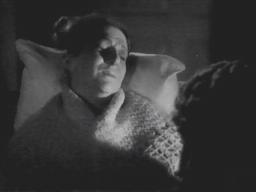 In the midst of this curious commentary on gossip, politics and the pursuit of true love, Bondi's Rachel stands as a pure heart. Part wise woman, part fairy godmother, part crusty crone -- Bondi's Rachel emerges as precisely the sort of "backwoods belle" the actress would periodically portray throughout her career. Whether she's yelping homespun aphorisms ("Marriage ain't a party dress; you gotta wear it morning, noon and night!") or longing for her pipe while on her death, um, chair, Bondi's Rachel emerges as the narrative's moral litmus test: those who do right by her = good; those who don't = badbadbad. Indeed, it's little surprise that Bondi's role occasioned Oscar's nomination. Rachel's story provides the loose framework of the story, both emotionally and morally, and both principal characters (Crawford's Peg and Barrymore's Jackson) reference Bondi's Rachel as their inspiration for nearly every important action. Yet, Bondi's work -- while perfectly fine -- does little to convey anything in particular about either the person of Rachel Jackson, one of the most enigmatic and controversial presidential wives in the history of the United States, or the emotional ravages of gossip. And while it is impressive that Bondi held her own against the scenery-chewing hogs Crawford and Barrymore, it remains the role that resonates here, not Bondi's perfunctorily efficient performance.
In the midst of this curious commentary on gossip, politics and the pursuit of true love, Bondi's Rachel stands as a pure heart. Part wise woman, part fairy godmother, part crusty crone -- Bondi's Rachel emerges as precisely the sort of "backwoods belle" the actress would periodically portray throughout her career. Whether she's yelping homespun aphorisms ("Marriage ain't a party dress; you gotta wear it morning, noon and night!") or longing for her pipe while on her death, um, chair, Bondi's Rachel emerges as the narrative's moral litmus test: those who do right by her = good; those who don't = badbadbad. Indeed, it's little surprise that Bondi's role occasioned Oscar's nomination. Rachel's story provides the loose framework of the story, both emotionally and morally, and both principal characters (Crawford's Peg and Barrymore's Jackson) reference Bondi's Rachel as their inspiration for nearly every important action. Yet, Bondi's work -- while perfectly fine -- does little to convey anything in particular about either the person of Rachel Jackson, one of the most enigmatic and controversial presidential wives in the history of the United States, or the emotional ravages of gossip. And while it is impressive that Bondi held her own against the scenery-chewing hogs Crawford and Barrymore, it remains the role that resonates here, not Bondi's perfunctorily efficient performance.
9.22.2006
9.20.2006
Celebrating the Sophia Sisterhood!
Happy Birthday!
click individual image to meet each member of the Sophia sorority
Commune with the glory of Sophia all day on TCM.
9.19.2006
Costumes by Ver-Sayce.
9.18.2006
Fiona Shaw in THE BLACK DAHLIA (Supporting Actress Watch)
 Among the most glaring inconsistencies -- of which there are many -- in Brian DePalma’s generally incoherent The Black Dahlia is the casting. And it’s not that some actors are extraordinarily good, while others are exceptionally bad. It's not even that it stars not one but two of StinkyLulu's least loved critical darlings (recast the Dahlia with Jennifer Connelly and it'd be a perfect trifecta of overratedness). No – it’s more a style thing. About half the cast tend toward cinematic naturalism while the other half lapse toward high theatrics. A matter of pitch as much as it is a matter of scale, the styles just don’t blend. The clash jars most in the discordance between Johanssen and Eckhart: she’s all smoking 40s glamourgal; he’s all rumply Gap everydude. Notably, Josh Hartnett's casting as the film's centerpiece character is nearly perfect: he’s a blank slate, a self-camouflaging chameleon, a cipher who adjusts to the needs of his scene partner. Unfortunately, in Dahlia, Hartnett has about 8000 scene partners, so the whole thing gets a tad confused after a while.
Among the most glaring inconsistencies -- of which there are many -- in Brian DePalma’s generally incoherent The Black Dahlia is the casting. And it’s not that some actors are extraordinarily good, while others are exceptionally bad. It's not even that it stars not one but two of StinkyLulu's least loved critical darlings (recast the Dahlia with Jennifer Connelly and it'd be a perfect trifecta of overratedness). No – it’s more a style thing. About half the cast tend toward cinematic naturalism while the other half lapse toward high theatrics. A matter of pitch as much as it is a matter of scale, the styles just don’t blend. The clash jars most in the discordance between Johanssen and Eckhart: she’s all smoking 40s glamourgal; he’s all rumply Gap everydude. Notably, Josh Hartnett's casting as the film's centerpiece character is nearly perfect: he’s a blank slate, a self-camouflaging chameleon, a cipher who adjusts to the needs of his scene partner. Unfortunately, in Dahlia, Hartnett has about 8000 scene partners, so the whole thing gets a tad confused after a while.But then there’s Fiona Shaw. Shaw plays Ramona Linscott, the California society matron and mother to Hilary Swank's Madeleine (with whom Hartnett's character has an odd dalliance). It's finally in the scenes amongst the Linscott family that the film really dips into the grand guignol grotesquerie of the story. Daddy Linscott's a robber baron who literally built his fortune on rotting lumber. Maddy Linscott's a bisexual nymphomaniac with a taste for trash. Little sister Linscott does pornographic line drawings. And Momma Linscott -- basically, Shaw's Ramona is an utter loon, psychically ravaged by her family's misdeeds and heavily medicated besides. Shaw's Ramona is nearly bursting at the seams of social propriety in her first scene, her contorted twist of a smile snarling to a desperate grimace by the scene's end. And, then, in her surprise of a second scene, Shaw's Ramona becomes completely unmoored. Loopy, over-the-top and completely deranged – she's like a cabaret singer with a machine gun. And yet, Fiona Shaw’s Ramona Linscott emerges as the single character (around that dinner table or in the entire film) who seemed to be experiencing a plausible emotional reality. Simply put, Shaw performance is beyond brilliant. (Plus, she offers two of the kuh-raziest arias screen-acting has seen in some time. Kuh-razy like Dean Stockwell in Blue Velvet kuh-razy.)
And, to be clear, StinkyLulu's not suggesting that Fiona should clear her 2007 schedule for all those late-winter awards shows. Not hardly. Shaw's Ramona Linscott's waaaaaaay to crazy for award show voters these days... But, golly, if t'ain't some of the most exhilarating Supporting Actress work that Lulu's seen in some time, an easy contender for StinkyLulu's short list of Favorite Actressing at the Edges-2006.
9.17.2006
Bonita Granville in These Three (1936) - Supporting Actress Sundays
 Oopsie doodle. StinkyLulu didn't expect to be so late with this entry but -- hey -- that's what happens when one ventures to the upper reaches of the Land of Enchantment: some conference hotels don't have internet access. (Imagine. So retro.) Speaking of retro...
Oopsie doodle. StinkyLulu didn't expect to be so late with this entry but -- hey -- that's what happens when one ventures to the upper reaches of the Land of Enchantment: some conference hotels don't have internet access. (Imagine. So retro.) Speaking of retro...'Twasn't that long ago that StinkyLulu and the Smackdowners contemplated another version of Lillian Hellman's The Children's Hour... Remember, lovely reader, way back in the golden days of July? When Fay Bainter proved quite a contender in 1961's Smackdown? Well, it's Hellman time again. Only this time, it's director William Wyler's 1936 go at the story (albeit sans sapphistry) and from which Oscar selected the first of many (how many is it? 8?) little girls to be nominated in this category...
approximately 27 minutes "on" screen
13 scenes (including 5 scenes under 1 minute)
31% of film's total screen time
13 scenes (including 5 scenes under 1 minute)
31% of film's total screen time
Granville -- who plays Mary Tilford, the awful little girl whose lies and innuendo nearly ruin the lives of These Three -- was a kid star of the old school. The daughter of actor parents, little Bonita had been acting for more than a decade by the time she (at age 12 or so) took on the part of Mary. Bonita Granville went on to act for most of her life, but it's for her performance here -- as well as her stint as the title character in a cinematic serialization of Nancy Drew -- that Granville is most remembered (though, surely, more people have seen her brief but memorable turn as Betty Davis' shallow niece in 1942's Now, Voyager).
The character of Mary Tilford is part indulged beast, part self-centered bully, part dispassionate sociopath -- Mary's a calculating menace both to those that love and those that loathe her. And Bonita Granville acquits the task efficiently. Indeed, Granville's Mary is most effective because she's so efficient, so cool, and so direct in her manipulations. Whether she's ensnaring her devoted grandmother in a skein of lies, or feigning friendship to a girl she plans to cruelly abuse in a moment's time, Granville's approach to the part is simple and direct, exceptionally understated in a dramatic scenario inclined to all kinds of hysterics. Indeed, Granville's Mary -- strangely subtle amidst the scenery chewing -- almost gets lost among the 1930s dramatics popping all 'round her.
A BRIEF ASIDE: It certainly doesn't help that, in many of her scenes, Granville's up against Marcia Mae Jones as everyone's favorite dim-witted kiddie klepto Rosalie. Quite simply, Jones' performance as Rosalie is one of the more electrifying kid performances Lulu's ever screened. With a wide-eyed pie-face just made for '30s cinematography, little Marcia Mae just wipes the floor with anyone, young or old, unfortunate enough to share the screen with her. The girl goes from shy to dumb to adamant to terrorized to hysterical -- all in the space of about 3 minutes, with intelligent clarity and thrilling precision. By far the best work in the film, Marcia Mae Jones' performance is reason enough to arrange a screening. And kid actresses should take note, what with Veronica Cartwright's excellent work in the 1961 version, Jones' scene-stealing should be a reminder that Rosalie is perhaps the coolest part in this enduring piece.
But there is one great moment in Bonita Granville's Mary that deserves especial note, a moment that subtly recalibrates the whole architecture of her entire performance: the penultimate beat of Mary's final scene. All her dissembling has been revealed and her grandmother, Mrs. Tilford, seems ready to keel over. Tilford's housekeeper, Agatha -- played by that snugglebunny Margaret Hamilton -- is charged with locking little Mary in her room. Mary tries to escape, but Agatha proves too swift, wrenches the child back to her and whallops her with a mighty slap. It's a shocking moment, made all the creepier by the glow that fills Granville's eyes as she regards Hamilton. Is it shock that someone would punish her? Relief that someone's finally taken her in hand? Or some creepier, other thing? (StinkyLulu votes for option 3.) This fleeting moment is the only glimpse that Granville provides of Mary without her mask and it's utterly enthralling. And it's proof positive that Bonita Granville was quite the little actress, entirely deserving of Oscar's nomination.
9.15.2006
NEWLAND WINS!!! ... StinkyLulu & the Sophia Sisterhood
At long last, the mystery of the new banner has been solved:
It's a select sorority, the Sophia Sisterhood...
Of which StinkyLulu's proud to be a member.
First, Criticlasm called the banner's subject, Sophia Loren.
And now, inveterate commentator & international supporting actress devotee Newland identified the connection.
And now, inveterate commentator & international supporting actress devotee Newland identified the connection.
It's a select sorority, the Sophia Sisterhood...
Of which StinkyLulu's proud to be a member.
Newland! Shoot an email to figure how to get you your prize!
9.13.2006
Any guesses?
So, do tell. Who's in the new banner? Guess, guess, guess...
Now...
Any guesses as to why?
And we have a winner:
Criticlasm correctly identified the subject featured in the new banner:
Sophia Loren!!!
Criticlasm correctly identified the subject featured in the new banner:
Sophia Loren!!!
Now...
Any guesses as to why?
Maria Ouspenskaya in Dodsworth - Supporting Actress Sundays (Wednesday Edition)
 When the 1936 roster for September's Supporting Actress Sundays came up for review, Lulu had no frickin' idea who the hell Maria Ouspenskaya was. Moreover, because things have been a littlecrazybusy in LuluLand of late, StinkyLulu didn't do any prep research before tossing in the dvd late last night. So. Imagine Lu's surprise when, about ten minutes from the end of the flick, Maria Ouspenskaya popped up for a single, slapdown of a scene. And StinkyLulu was all: "Oh. My. God. Is Maria Ouspenskaya Madame Ouspenskaya?! The legendary proponent of Stanislavski's System among American actors in the '20s and '30s?! The little old crone/bitch-on-wheels acting teacher -- 8th-generation impressions of whom acting geeks trade like the über-queers trade Tallulahs?! That Madame Ouspenskaya?! Who knew?!" (Truth be told, StinkyLulu really should have known.) But 'twas exciting nonethe to have an unexpected late-night encounter with THE...
When the 1936 roster for September's Supporting Actress Sundays came up for review, Lulu had no frickin' idea who the hell Maria Ouspenskaya was. Moreover, because things have been a littlecrazybusy in LuluLand of late, StinkyLulu didn't do any prep research before tossing in the dvd late last night. So. Imagine Lu's surprise when, about ten minutes from the end of the flick, Maria Ouspenskaya popped up for a single, slapdown of a scene. And StinkyLulu was all: "Oh. My. God. Is Maria Ouspenskaya Madame Ouspenskaya?! The legendary proponent of Stanislavski's System among American actors in the '20s and '30s?! The little old crone/bitch-on-wheels acting teacher -- 8th-generation impressions of whom acting geeks trade like the über-queers trade Tallulahs?! That Madame Ouspenskaya?! Who knew?!" (Truth be told, StinkyLulu really should have known.) But 'twas exciting nonethe to have an unexpected late-night encounter with THE...
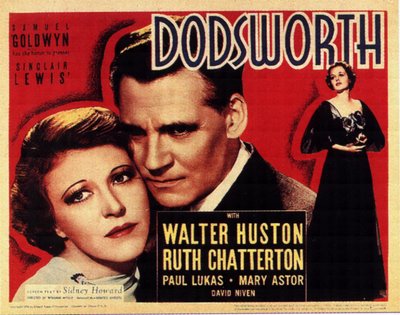
...Maria Ouspenskaya in Dodsworth (1936).
5 minutes and 27 seconds on-screen
1 scene
5% of film's total screen time
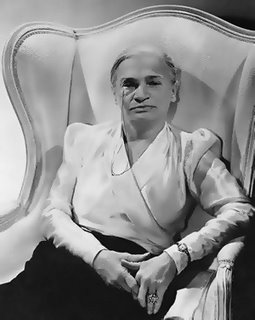 The Russian-born Ouspenskaya was a member of the legendary Moscow Art Theatre, where she studied with and was directed by Stanislavski. Ouspenskaya came to U.S. with the Moscow Art Theatre in 1922, and became one of the few who remained in New York after the theatre's storied U.S. tour. After achieving sustained success on the New York stage during the 1920s, Ouspenskaya founded the School of Dramatic Art in New York in 1929. When the school's finance's foundered during the Depression, Ouspenskaya headed to Hollywood on a dollar-gathering venture for the school. Her first Hollywood film (she had done a few Russian films) just happens to have been Dodsworth, for which she received her first of two Supporting Actress nominations, and which began a thirteen-year run as one of Hollywood's most memorable character actresses. (Ouspenskaya died in 1949 of a stroke resulting from injuries sustained in a house fire.)
The Russian-born Ouspenskaya was a member of the legendary Moscow Art Theatre, where she studied with and was directed by Stanislavski. Ouspenskaya came to U.S. with the Moscow Art Theatre in 1922, and became one of the few who remained in New York after the theatre's storied U.S. tour. After achieving sustained success on the New York stage during the 1920s, Ouspenskaya founded the School of Dramatic Art in New York in 1929. When the school's finance's foundered during the Depression, Ouspenskaya headed to Hollywood on a dollar-gathering venture for the school. Her first Hollywood film (she had done a few Russian films) just happens to have been Dodsworth, for which she received her first of two Supporting Actress nominations, and which began a thirteen-year run as one of Hollywood's most memorable character actresses. (Ouspenskaya died in 1949 of a stroke resulting from injuries sustained in a house fire.)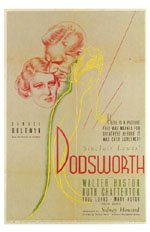 In Dodsworth, Ouspenskaya plays Baroness Von Obersdorf, the imperious mother of Baron Kurt von Obersdorf -- the third European cad to "make love" to the story's female protagonist, Fran Dodsworth (Ruth Chatterton), a wealthy not-quite-divorced American simp. Baron Kurt & Fran are planning to marry and Ouspenskaya's Baroness arrives -- a wee tiny gorgon swathed in widow's black and possessing the kind of bark that makes you real scared of her bite-- to survey her son's betrothed. Simply put, Ouspenskaya's Baroness does not approve and conveys her withering disdain with near scientific precision. In perhaps the movie's most exultant moment, Ouspenskaya's Baroness slaps some sense into the sillysilly Fran: "Have you thought how little happiness there can be for the old wife of a young husband!" Of course, the impact on Fran -- whose dithering selfishness contributes the narrative through-line of the film -- doesn't last long. But the Baroness' verbal smackdown of insufferable Fran contributes one of those moments to inspire a movie-house's cheering... and Ouspenskaya manages it with clarity, precision and integrity.
In Dodsworth, Ouspenskaya plays Baroness Von Obersdorf, the imperious mother of Baron Kurt von Obersdorf -- the third European cad to "make love" to the story's female protagonist, Fran Dodsworth (Ruth Chatterton), a wealthy not-quite-divorced American simp. Baron Kurt & Fran are planning to marry and Ouspenskaya's Baroness arrives -- a wee tiny gorgon swathed in widow's black and possessing the kind of bark that makes you real scared of her bite-- to survey her son's betrothed. Simply put, Ouspenskaya's Baroness does not approve and conveys her withering disdain with near scientific precision. In perhaps the movie's most exultant moment, Ouspenskaya's Baroness slaps some sense into the sillysilly Fran: "Have you thought how little happiness there can be for the old wife of a young husband!" Of course, the impact on Fran -- whose dithering selfishness contributes the narrative through-line of the film -- doesn't last long. But the Baroness' verbal smackdown of insufferable Fran contributes one of those moments to inspire a movie-house's cheering... and Ouspenskaya manages it with clarity, precision and integrity. Can't say that StinkyLulu loved the performance, but -- for what it was -- Maria Ouspenskaya's Baroness contributed some exhilarating zest to this fascinating, if tortured, contemplation on the perils of middle age. And while Mary Astor might have made for a much more satisfying Supporting Actress candidate, Ouspenskaya's just fine. Her extraordinary presence creates an indelible impression & one can't help but think that this encounter with the Baroness might well be the turning point in Fran Dodsworth's idiocy. All told, an interesting romp that reminds Lulu that -- where Supporting Actresses are concerned -- surprises lurk around every corner...
Can't say that StinkyLulu loved the performance, but -- for what it was -- Maria Ouspenskaya's Baroness contributed some exhilarating zest to this fascinating, if tortured, contemplation on the perils of middle age. And while Mary Astor might have made for a much more satisfying Supporting Actress candidate, Ouspenskaya's just fine. Her extraordinary presence creates an indelible impression & one can't help but think that this encounter with the Baroness might well be the turning point in Fran Dodsworth's idiocy. All told, an interesting romp that reminds Lulu that -- where Supporting Actresses are concerned -- surprises lurk around every corner...PS: And, once again, who knew of John Payne's hotness? The scene were he kisses the palm of his wife's hand as she cradles their newborn baby? Swoon/woof/swoon.
Labels:
1936,
maria ouspenskaya,
supporting actress,
william wyler
9.12.2006
Banner Contest
A prize*, lovely readers, to the first among you to correctly identify (in comments) the subject of the new banner atop this page.
Another prize** to the first to correctly identify (in comments) why the subject of this new banner is a particularly appropriate choice.
Another prize** to the first to correctly identify (in comments) why the subject of this new banner is a particularly appropriate choice.
* one (1) book of your choice from those currently available @ PaperBackSwap
** two (2) books of your choice from those currently available @ PaperBackSwap
** two (2) books of your choice from those currently available @ PaperBackSwap
9.10.2006
Alice Brady in My Man Godfrey (1936) - Supporting Actress Sundays
 "Madcap hilarity ensues" has to be one of Lulu's most favorite phrases. Just toss out the set-up of a comedy and then conclude with "madcap hilarity ensues," thereby distill all the internecine twisty turns of comic plotting into a simple summary that tells everyone what they most need to know. An example? A swinging single guy wants to share an apartment with two sexy ladies, so he tells the nosy landlord he's a homo; madcap hilarity ensues. Another? A somewhat frumpy young woman takes a job at the center of the fashion universe and? Madcap hilarity ensues (with some life lessons learned along the way: Exhibits A & B). A third? The dimwitted, ne'er-do-well son of a former president somehow gets elected to the presidency at a crucial juncture in the nation's history and madcap hilar -- no wait, that's not funny at all. (See, it's a thin thin line separating comedy from tragedy.) Anyway...
"Madcap hilarity ensues" has to be one of Lulu's most favorite phrases. Just toss out the set-up of a comedy and then conclude with "madcap hilarity ensues," thereby distill all the internecine twisty turns of comic plotting into a simple summary that tells everyone what they most need to know. An example? A swinging single guy wants to share an apartment with two sexy ladies, so he tells the nosy landlord he's a homo; madcap hilarity ensues. Another? A somewhat frumpy young woman takes a job at the center of the fashion universe and? Madcap hilarity ensues (with some life lessons learned along the way: Exhibits A & B). A third? The dimwitted, ne'er-do-well son of a former president somehow gets elected to the presidency at a crucial juncture in the nation's history and madcap hilar -- no wait, that's not funny at all. (See, it's a thin thin line separating comedy from tragedy.) Anyway..."Madcap hilarity ensues" is a phrase that actually emerged in descriptions of the "screwball" comedies of the 1930s, a classic example of which just happens to finally bring StinkyLulu's first Supporting Actress profile for the month of September...
approximately 41 minutes "on" screen (including 1.5 minute "buzzing" scene)
10 scenes
46% of film's total screen time
10 scenes
46% of film's total screen time
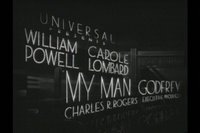 The basic set-up of the beloved My Man Godfrey is this: At the height of the Great Depression, a pair of intensely competitve, obscenely wealthy sisters encounter an enigmatic homeless man while playing a faddish game. The sillier sister hires the man to be her new butler/protege and...madcap hilarity ensues.
The basic set-up of the beloved My Man Godfrey is this: At the height of the Great Depression, a pair of intensely competitve, obscenely wealthy sisters encounter an enigmatic homeless man while playing a faddish game. The sillier sister hires the man to be her new butler/protege and...madcap hilarity ensues.  (Supporting Actress nominee Alice Brady makes her first appearance as the girls' mother -- fluttery society matron Angelica Bullock -- about 7 minutes along in the film, precisely at the point in the narrative where said "madcap hilarity" begins ensuing.) The man Godfrey (William Powell, who glides through the role with enthralling ease; neither glib nor plummy, Powell's performance is the height of intelligent 1930s elegance) ends up doing much more than "buttling" for the Bullocks; he changes their lives forever. (Cue music swell.) 70 years later, movie audiences have seen this story a thousand times, told better and (mostly) worse.
(Supporting Actress nominee Alice Brady makes her first appearance as the girls' mother -- fluttery society matron Angelica Bullock -- about 7 minutes along in the film, precisely at the point in the narrative where said "madcap hilarity" begins ensuing.) The man Godfrey (William Powell, who glides through the role with enthralling ease; neither glib nor plummy, Powell's performance is the height of intelligent 1930s elegance) ends up doing much more than "buttling" for the Bullocks; he changes their lives forever. (Cue music swell.) 70 years later, movie audiences have seen this story a thousand times, told better and (mostly) worse. 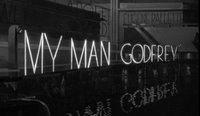 But it's worth remembering that not only did My Man Godfrey establish this formula for the Hollywood factory but there's a sparkle to it which goes well beyond that formula and which makes My Man Godfrey a deservedly beloved Hollywood classic. (A word of caution: do try to find the Criterion version for your screening, lovely reader; there are a whole bunch of awful low-rent transfers out there on dvd -- like the one Lulu screened -- and the sound clarity really suffers. Be on particular alert for the evil colorized version...)
But it's worth remembering that not only did My Man Godfrey establish this formula for the Hollywood factory but there's a sparkle to it which goes well beyond that formula and which makes My Man Godfrey a deservedly beloved Hollywood classic. (A word of caution: do try to find the Criterion version for your screening, lovely reader; there are a whole bunch of awful low-rent transfers out there on dvd -- like the one Lulu screened -- and the sound clarity really suffers. Be on particular alert for the evil colorized version...) Now, to the actressing at the edges. There are three Supporting Actresses in Godfrey: the nominated Alice Brady as the dotty society mama, the zingy Jean Dixon as the Molly the maid and the magnetic Gail Patrick as the "other" sister. (Perhaps unsurprisingly, Oscar picked the least interesting of the three to nominate; Lulu, of course, woulda picked Dixon.) But Brady's Mrs. Angelica Bullock definitely emerges as the wackiest of the three parts.
Now, to the actressing at the edges. There are three Supporting Actresses in Godfrey: the nominated Alice Brady as the dotty society mama, the zingy Jean Dixon as the Molly the maid and the magnetic Gail Patrick as the "other" sister. (Perhaps unsurprisingly, Oscar picked the least interesting of the three to nominate; Lulu, of course, woulda picked Dixon.) But Brady's Mrs. Angelica Bullock definitely emerges as the wackiest of the three parts.  Part concerned mother, part indulged wife, mostly self-obsessed rich lady, Brady's Angelica has all the accessories of absurd wealth. Crazy gowns. Idiotic dogs. And an entourage of one, Carlo -- ostensibly a serious musician, certainly a parasite, possibly a "walker" -- who eats a lot and sometimes seems as much her pet as her protege.
Part concerned mother, part indulged wife, mostly self-obsessed rich lady, Brady's Angelica has all the accessories of absurd wealth. Crazy gowns. Idiotic dogs. And an entourage of one, Carlo -- ostensibly a serious musician, certainly a parasite, possibly a "walker" -- who eats a lot and sometimes seems as much her pet as her protege.But Oscar demonstrated what would become some familiar tics in acknowledging Alice Brady with this nomination (& in the handful of remaining years before Brady's death from cancer in 1939). Most essentially, Alice Brady was an accomplished stage actress (consider her accolades for her performance as Lavinia in the orginal 1931 NY production of Mourning Becomes Electra, a doozy of a non-comedic role) who was also one of the few reliable silent players to make the transition to sound relatively easily. Indeed, it's interesting that Oscar noted Brady's performance as Angelica Bullock, which finally gave voice to the dotty society matron role for which Brady was most known during the silent era. Indeed, it's as Angelica Bullock that Alice Brady created a sound version of her silent signature role...
 See, in Godfrey, Brady's Angelica Bullock is portrayed as the apex of irrelevance and the camera knows it. Most of Brady's scenes end as she's still talking, even as the camera has followed someone else to another room/scene. Often, major scenes happen around or adjacent to Brady's Angelica, who does little more than punctuate things with breezily absurd non-sequiturs. Notably, Brady mostly crafts Angelica through this vocality: her Mrs. Bullock is warbly, chattery and (not infrequently) nearly unintelligible. But, even if no one's really listening, every time Brady's Angelica chirps, the sound resounds. Alice Brady's there; ya just can't miss her.
See, in Godfrey, Brady's Angelica Bullock is portrayed as the apex of irrelevance and the camera knows it. Most of Brady's scenes end as she's still talking, even as the camera has followed someone else to another room/scene. Often, major scenes happen around or adjacent to Brady's Angelica, who does little more than punctuate things with breezily absurd non-sequiturs. Notably, Brady mostly crafts Angelica through this vocality: her Mrs. Bullock is warbly, chattery and (not infrequently) nearly unintelligible. But, even if no one's really listening, every time Brady's Angelica chirps, the sound resounds. Alice Brady's there; ya just can't miss her.And even though StinkyLulu's not too too fond of the performance (a malaise certainly cultivated by years upon years of Brady's warbly shrillness being the stock vocal choice for actresses portraying matrons of a certain tax bracket), StinkyLulu must confess: Brady's Angelica has one of the best last lines in all of cinema. The Bullock household's in an uproar. Her husband's literally thrown Carlo out. Godfrey's not Godfrey but another Godfrey entirely. Her family rushes off to resolve matters far beyond her comprehension. Even the camera leaves her. And what do we hear?
"And Carlo's gone out of the window. Everybody's gone."There's no rational reason why this little line should give Lulu's little heart such an afterglow, but, hey, that's the nature of madcap hilarity: it ensues.
Tune in soon for more Supporting Actress madness, lovely reader.
Being away last weekend threw things off a touch, but things'll be back on track this week... Possibly even this Wednesday...
Being away last weekend threw things off a touch, but things'll be back on track this week... Possibly even this Wednesday...
9.07.2006
A Very Stinky Birthday...
...Is Just Around the Corner.
Oh, lovely reader.
Just 2 Weeks from Today -- on September 20 -- StinkyLulu will be celebrating a birthday. Not a major milestone birthday...just another slow, trudging step along the path to oldness. But. For some reason, StinkyLu's really in the mood for some birthday swag this year. (No party necessary. Just merch. Thanks.) And though it's always unwise to imitate the inimitable, StinkyLulu's elected to take a cue from a certain someone's approach to such things and boldly announce the simple fact of StinkyLulu's upcoming Birthday.
Oh, lovely reader.
Just 2 Weeks from Today -- on September 20 -- StinkyLulu will be celebrating a birthday. Not a major milestone birthday...just another slow, trudging step along the path to oldness. But. For some reason, StinkyLu's really in the mood for some birthday swag this year. (No party necessary. Just merch. Thanks.) And though it's always unwise to imitate the inimitable, StinkyLulu's elected to take a cue from a certain someone's approach to such things and boldly announce the simple fact of StinkyLulu's upcoming Birthday.
Hee hee.
Lulu's never done anything like this...
It's fun being greedy.
Hee.
Lulu's never done anything like this...
It's fun being greedy.
Hee.
Subscribe to:
Posts (Atom)


